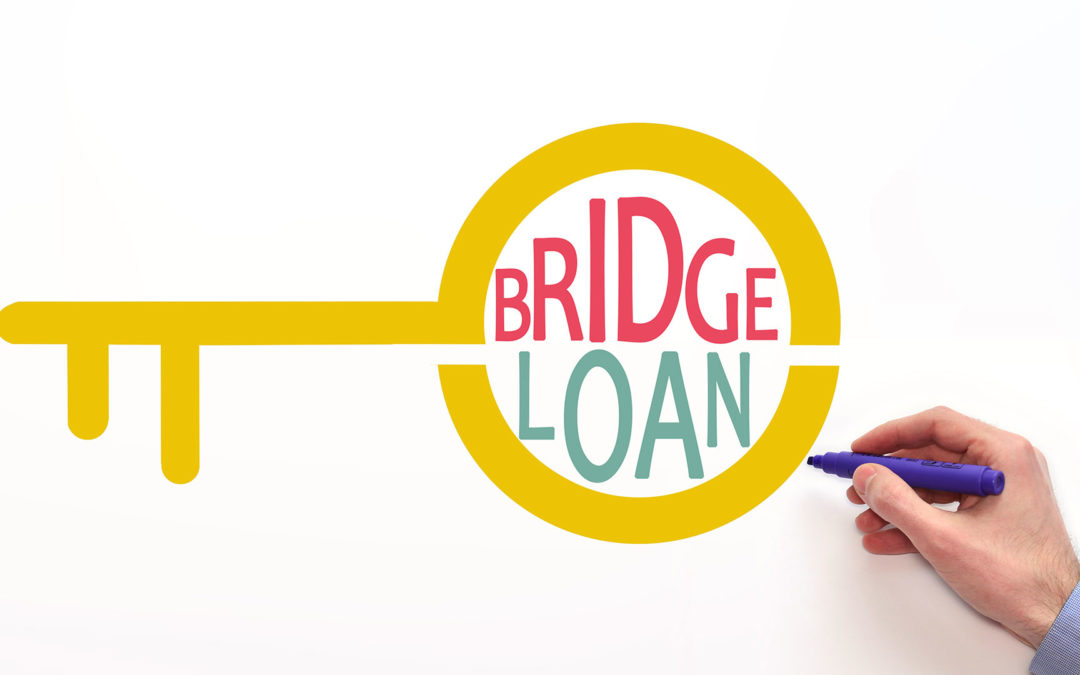
"The real estate market is on fire! Everything is selling so fast!" - Have you been hearing this a lot lately?
As a homeowner you're probably thinking 'this is great' and you'd like to take advantage of the high demand and cash in on the equity you have in your home. This is a great idea in theory but there is a bigger problem at hand; LOW inventory! While many homeowners are taking advantage of the market, you might be wondering where you'll go next and don't want to end up in a situation where the timing isn't right and you have no where to go. If that is a top concern of yours, there are options that you may not have known of or thought about.
One of those options is a bridge loan.
What is a Bridge Loan?
A bridge loan is a short-term loan used until a person or company secures permanent financing or removes an existing obligation. It allows the user to meet current obligations by providing immediate cash flow. Bridge loans are short term, up to one year, have relatively high interest rates, and are usually backed by some form of collateral, such as real estate or inventory.
Homeowners who are selling one property and buying (or building) another may face challenges with coordinating both events, especially in competitive environments. Many homeowners who are moving rely on money they’ll get from the sale of their current home to fund the purchase of a new one. But closing dates don’t always align, and when that happens, you can find yourself in a precarious financial balancing act. That's where bridge loans come into play! They can be a useful solution to this dilemma.
How a Bridge Loan Works
Also known as interim financing, gap financing, or swing loans, bridge loans bridge the gap during times when financing is needed but not yet available.
Many sellers have equity in their existing real estate. There may be a gap in the date those funds are available if a new home must be closed before the old real estate sells. Bridge loans are temporary loans that bridge that gap. It is a substitute for home equity loans (since many lenders do not approve home equity loans for properties on the market).
The underwriting process and criteria for bridge loans will be very different from typical mortgages. Because bridge loans are short-term, they are not normally submitted to the secondary market and therefore need not use the same standards. Minimum credit scores, debt-to-income ratios, and other qualifying factors may range among lenders. During the life of the bridge loan, the homeowner will essentially have two mortgages (one on the home listed for sale and one on the new property). Therefore, the borrower must be able to afford both.
Whether you should obtain a bridge loan is dependent on your financial and real estate goals. A local mortgage company that provides bridge loans can offer more comprehensive information beyond the MA bridge loans.

Hear it from the experts, Anne Borghesani with First Home Mortgage explains:
Mr. Smith is selling their primary home for $300,000. He owes $100,000. Once he sells it, he will have about $185,000 to put towards another home.
Mr. Smith wants to purchase his dream home that is listed at $750,000. He won’t be able to close on his current home until after he purchases this one. He has a savings account with $85,000 to use towards it.
If he puts $85,000 down on the $750,000 home, that will give him a $665,000 loan amount, which would make an 89% loan to value. Mr. Smith knows that in order to avoid PMI, he needs to be under 80% loan to value.
So, he gets a “quasi bridge loan” which is really a home equity line on the house he is purchasing for $100,000. He knows once he sells his current home, he can pay it right off, but keep the line open in case he wants to add on a garage some day.
So, the purchase price is $750,000, he puts down $85,000, then takes the equity line out for $100,000, leaving him a loan amount of $565,000 which gives him a 75% loan to value to avoid PMI.
Once he sells his house, he pays off the $100,000 second loan and is left with the loan amount he wanted if he was able to sell his house prior to purchasing the new home.
Anne Borghesani | Branch Manager | First Home Mortgage
direct: 781.236.0361 | mobile: 774.240.9200 | fax: 443.725.0521
NMLS ID: CORP: #71603 LO: #188551 | www: www.aborghesani.firsthome.com
Request List of Local Lenders
Find your Dream Home
Source: Damore Law






